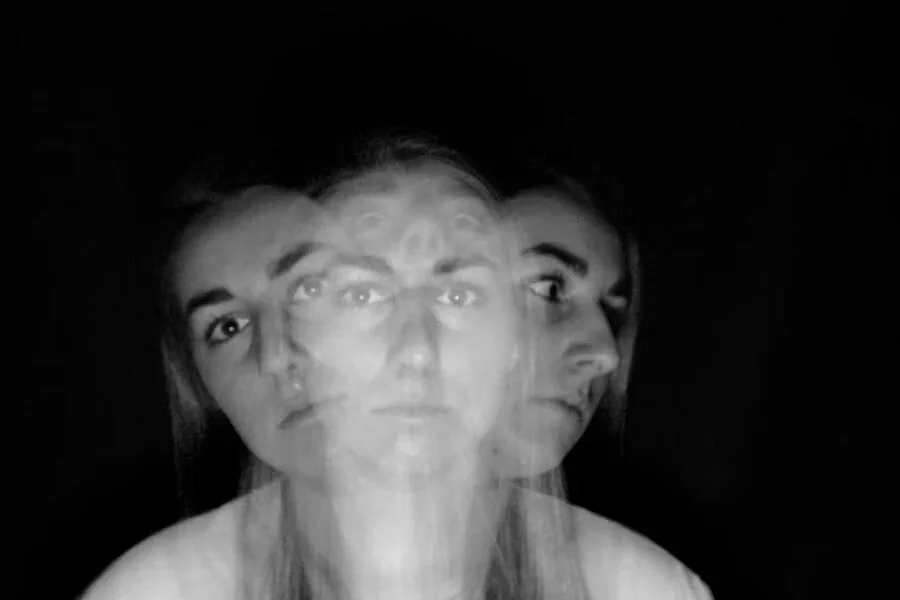Cognitive Dissonance in Relationships & How to Overcome It
“A person with conviction is a hard person to change. Tell them you disagree and they turn away. Show them facts or figures and they question your sources. Appeal to logic and they fail to see your point.”
Have you ever felt stuck in a relationship pulled between love and resentment, certainty, or doubt? Maybe your partner, family member, boss, co-worker, or friend seems distant, conflicted, or hot and cold. This is often what cognitive dissonance in relationships looks like — and it’s something I frequently help clients navigate in my work as a therapist.
Below, we’ll explore how you might experience cognitive dissonance in your relationships, how it might show up, and why it impacts our mental health. Whether you’re experiencing this yourself or trying to understand a loved one who is, this article will offer clarity, insight, and practical ways for coping.
What is cognitive dissonance in a relationship?
Cognitive dissonance happens when your beliefs, actions, or emotions don’t line up. In relationships, this can look like feeling torn between love and resentment or saying things you don’t fully believe. This can be confusing, distressing, and exhausting, especially when family values, cultural ideals, or social expectations are involved.
Social psychologist Leon Festinger developed Cognitive Dissonance Theory to explain two key ideas:
Mental discomfort, like anxiety or depression can be present when our thoughts, feelings, behaviors, beliefs, and attitudes contradict each other
The ways we change, adapt, adjust, or shift our beliefs to justify our actions, despite contradictions or even clear opposing evidence
Festinger’s most famous cognitive dissonance experiment asked participants to do a boring task, then paid either $1 or $20 to lie and say it was enjoyable. Those who were paid just $1 to lie rated the task as more enjoyable than those who were paid $20, because the small reward wasn’t enough to justify the lie. They unconsciously changed their belief to reduce inner conflict. In other words, they resolved the discomfort between their actions and beliefs by adjusting what they believed.
In real life, it’s quite common to experience cognitive dissonance in relationships. We say things we don’t fully believe, stay in situations that conflict with our values, or rationalize behaviors that don’t sit right — all to avoid the discomfort of inner conflict.
Examples of Cognitive Dissonance is Relationships
Sometimes the inner conflict in relationships is conscious, but it’s often beneath the surface. Even when we aren’t fully aware of it, there can be signs that something isn’t right, such as confusion, overthinking, or emotional paralysis.
Let’s explore common examples of cognitive dissonance in relationships:
Justifying harmful behavior - Telling yourself "They yelled because they care" minimizes pain to protect the relationship, creating a gap between what you believe you deserve and what you're experiencing.
Avoiding conflict to keep the peace - Choosing silence over honesty, thinking that you'd rather stay calm than make things worse, creates tension between your inner truth and outer behavior.
Feeling loyal to someone who hurt you - You may tell yourself, "Well, no one's perfect," even after repeated harm. Loyalty and pain pull in opposite directions, and dissonance lives in the tension between them.
Seeing the relationship in extremes - This might be viewing someone as either perfect or terrible, with no in-between. This kind of black and white thinking can intensify cognitive dissonance because it doesn't leave room for gray areas, making it harder to understand and address problems.
Gaslighting yourself - Ignoring your instincts with thoughts like, "Maybe I'm overreacting," creates dissonance between what you feel and what you've been led to believe.
Staying because you've invested so much - You may resist change because you've invested time, energy, money, or love. Thoughts like "I've come this far and can't walk away now" reflect dissonance between your current needs and your past investment.
How Cognitive Dissonance Affects Relationships
Cognitive dissonance in relationships isn’t just about one person’s mental health discomfort.It impacts the entire ecosystem of your relationship and life.
Erosion of trust and intimacy - Intimacy can break down when feelings don’t match words
Difficulty making decision - You may feel paralyzed, unsure whether to stay, speak up, or walk away
Psychological stress - The dissonance can cause anxiety, irritability, or burnout from emotional suppression
Strained relationships - Patterns of avoidance, blame, or over-rationalization can deepen disconnection
When left unresolved, dissonance becomes a default. This can keep the relationship from growing and shape how we show up with others. What we suppress in one relationship may overflow onto another, distorting our patterns and distancing ourselves from the people around us.
How to Overcome Cognitive Dissonance in Relationships
Please know that clarity is possible. Whether you experience cognitive dissonance or your partner does, there are ways to work through it. It starts with seeing dissonance not as a failure, but as a sign that something deeper needs to be acknowledged.
Here are some practical, grounded strategies for working through cognitive dissonance:
Practice self reflection - Ask yourself, Whose voice is this? Sometimes the beliefs behind dissonance aren’t truly your own but inherited from family, culture, religion, or past relationships. Naming what’s actually yours can be a powerful first step toward clarity.
Allow discomfort - Dissonance can feel like pressure to fix something right away, but don’t rush. Sitting with uncertainty can create space for deeper truths to surface and transformation to begin taking shape.
Challenge your beliefs - Black-and-white thinking intensifies dissonance. Try to hold multiple truths at once: Can my partner be both loving and flawed? Can I feel uncertain and still be committed? Making space for nuanced, gray areas allows for more honest, flexible thinking.
Identify secondary gains - Sometimes confusion serves a purpose, like protecting from loss, change, grief, or responsibility. Naming those hidden motivations can offer helpful insights
Open communication - If it’s safe to do so, talk about the dissonance rather than hiding it. You don’t need all the answers to start a conversation. Simply naming the tension can reduce its hold and foster connection and even resolution.
Seek support - You don’t have to navigate this alone. A trusted therapist, coach, or support group can help you explore the beliefs, fears, and histories shaping your dissonance, guiding you toward more aligned, grounded choices.
Cognitive Dissonance in Relationships: Conclusion
Cognitive dissonance is a common, often challenging experience that can create confusion, tension, and emotional strain. By understanding what it is, recognizing its signs, and learning practical strategies to face it, you can begin to move toward greater clarity, honesty, and connection — with yourself and others.
If you’re feeling stuck or overwhelmed, you’re not alone. Working through cognitive dissonance takes courage and support, and compassionate professionals are here to help you navigate the complexity.
If you’d like guidance tailored to your unique situation, I offer consultations and therapy for families and couples seeking to honor nuance, heal relational wounds, and build more authentic connections. Schedule a free consultation — I’d love to hear from you.


